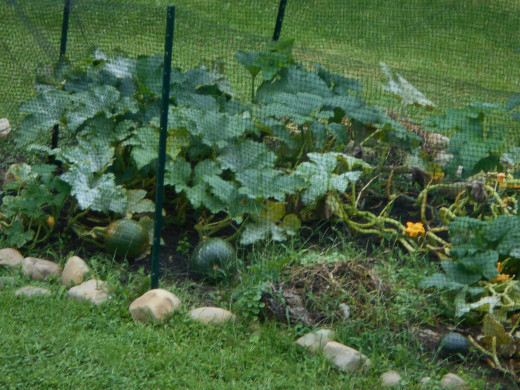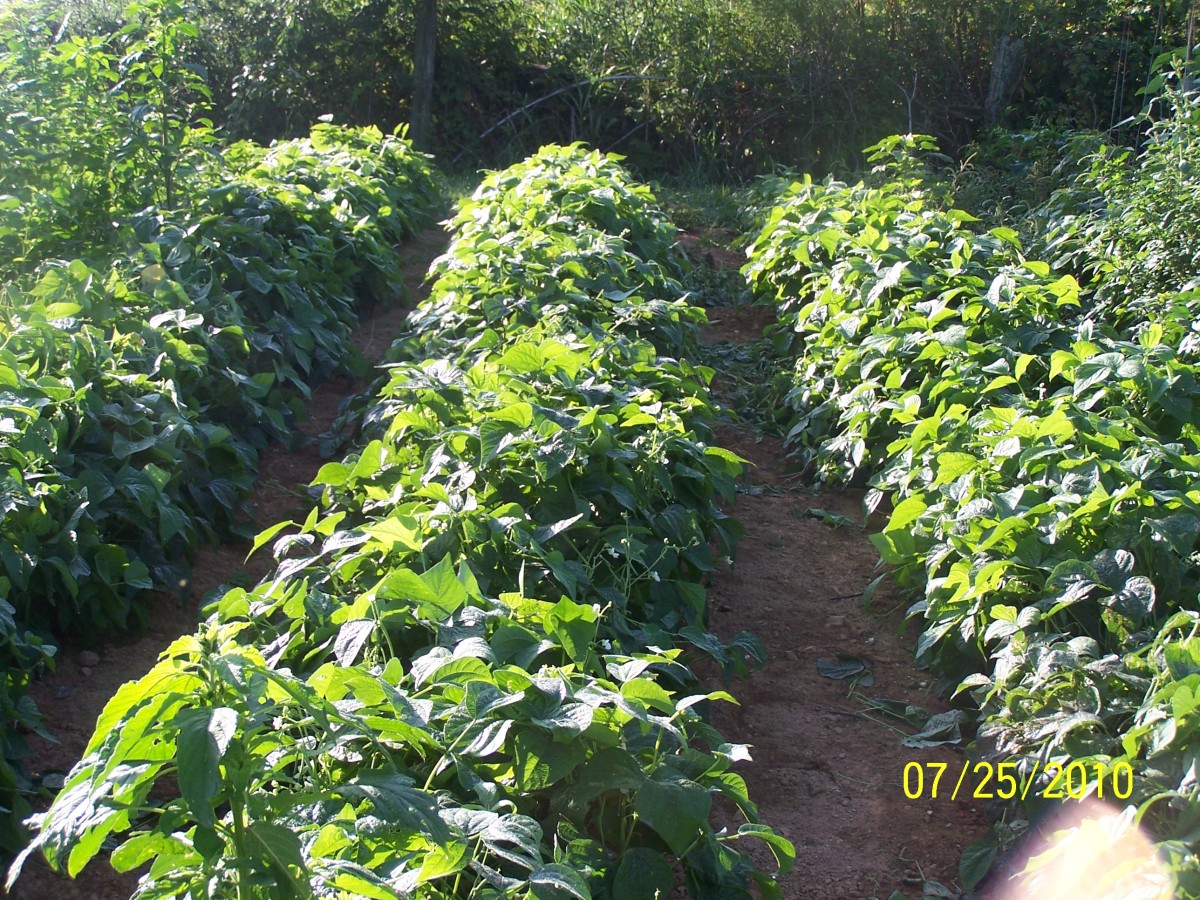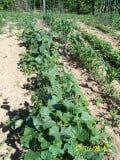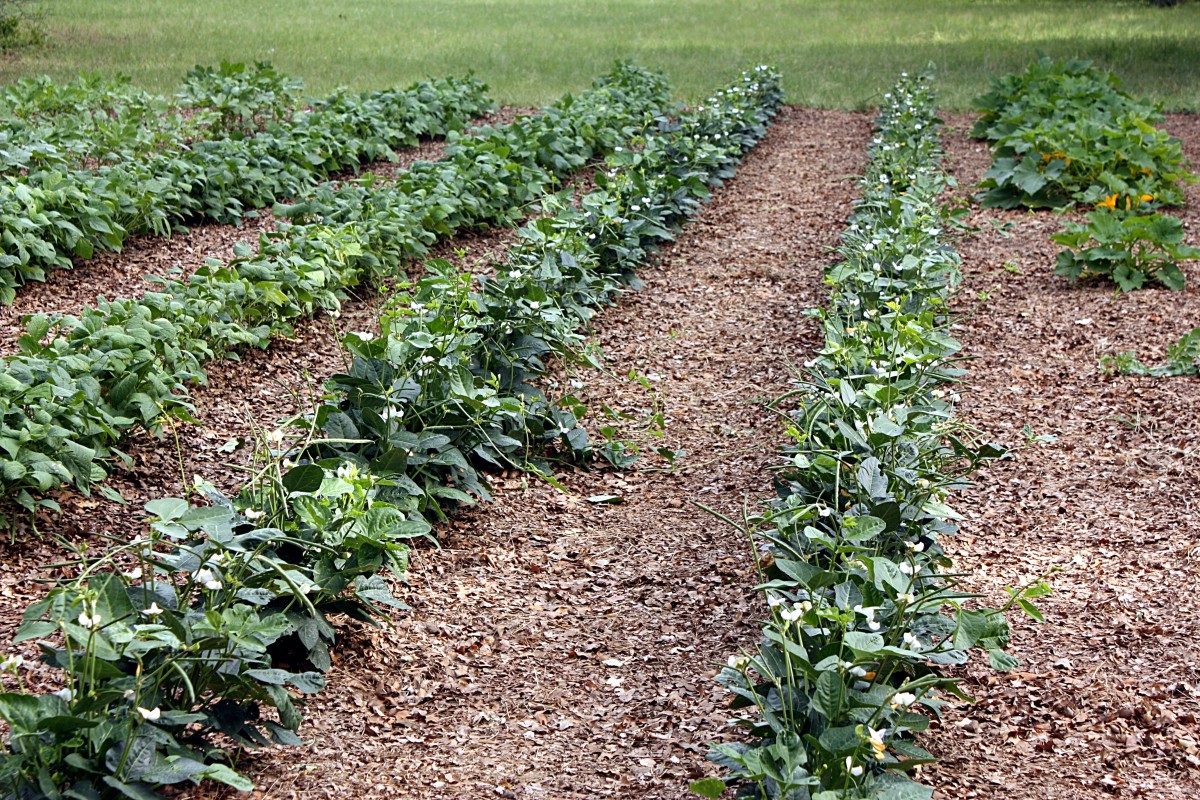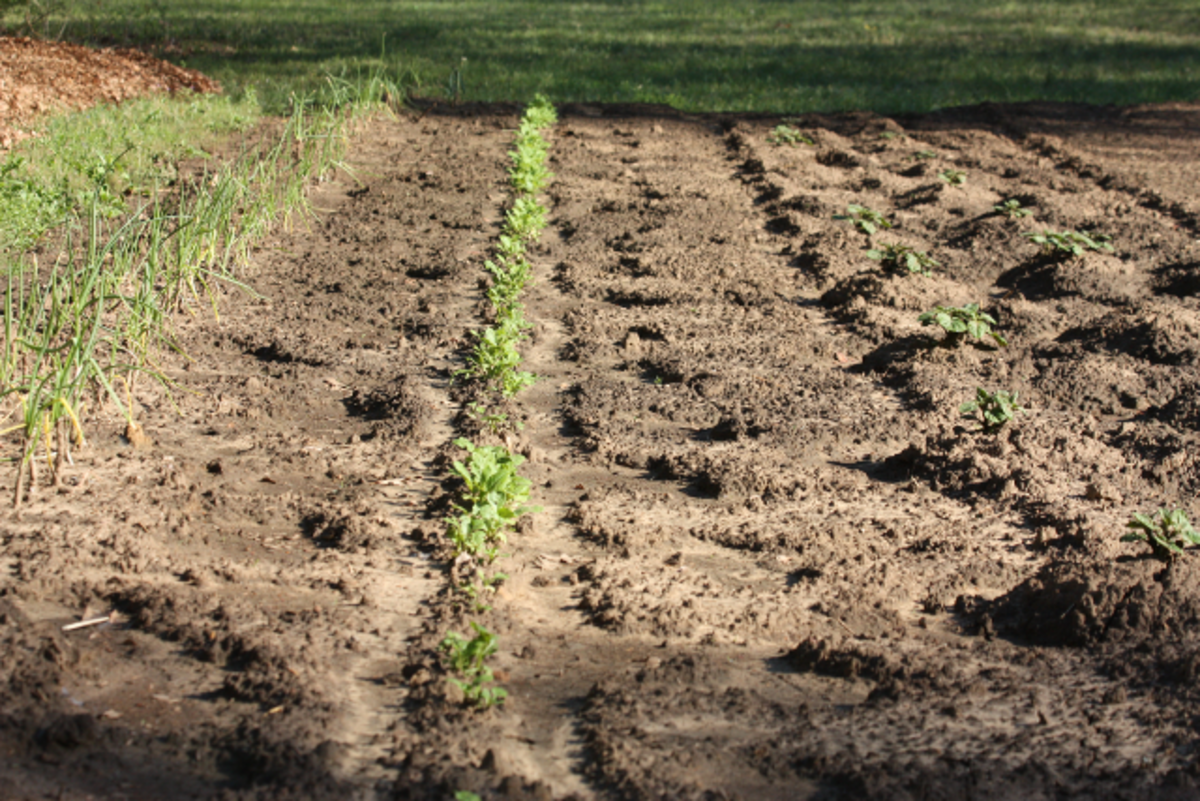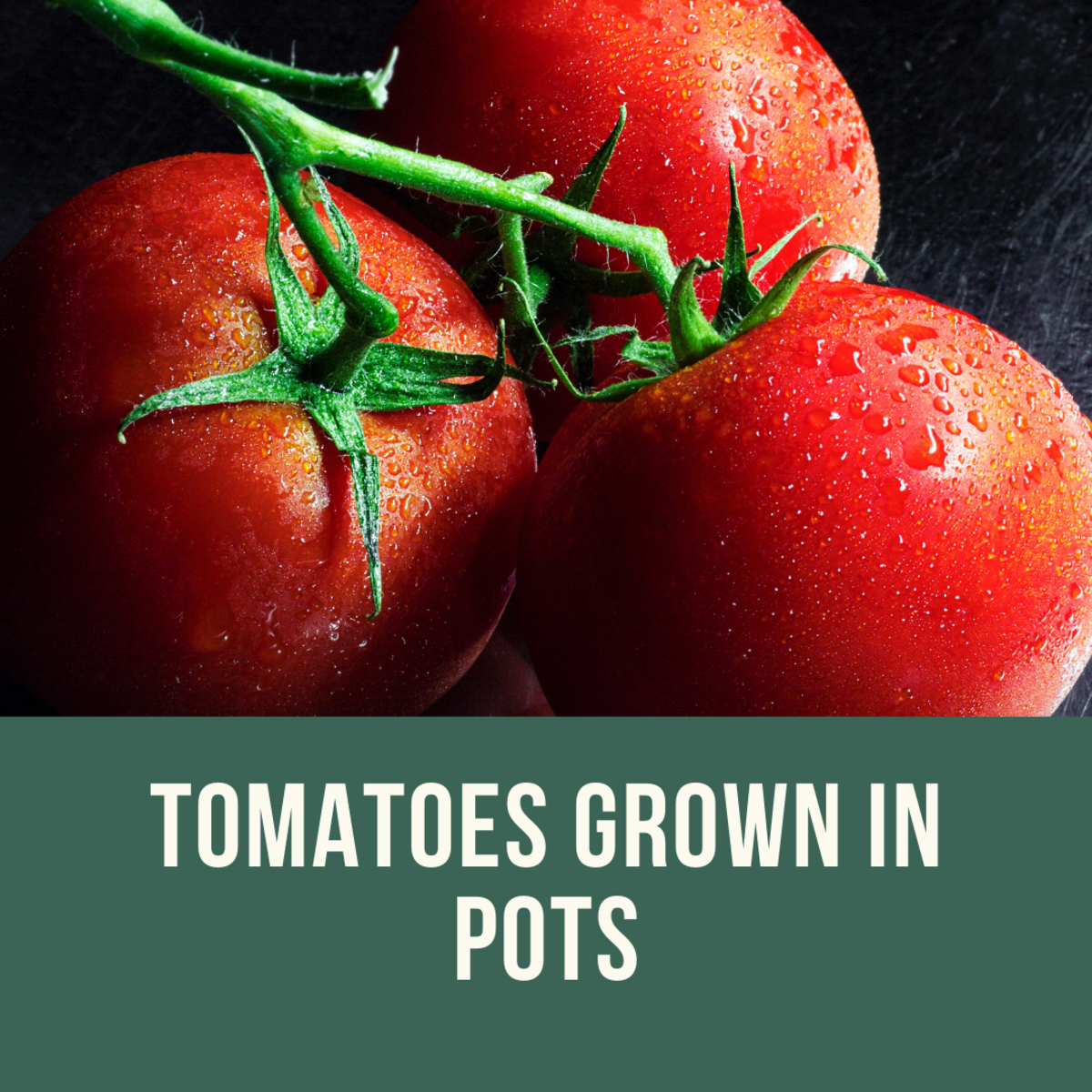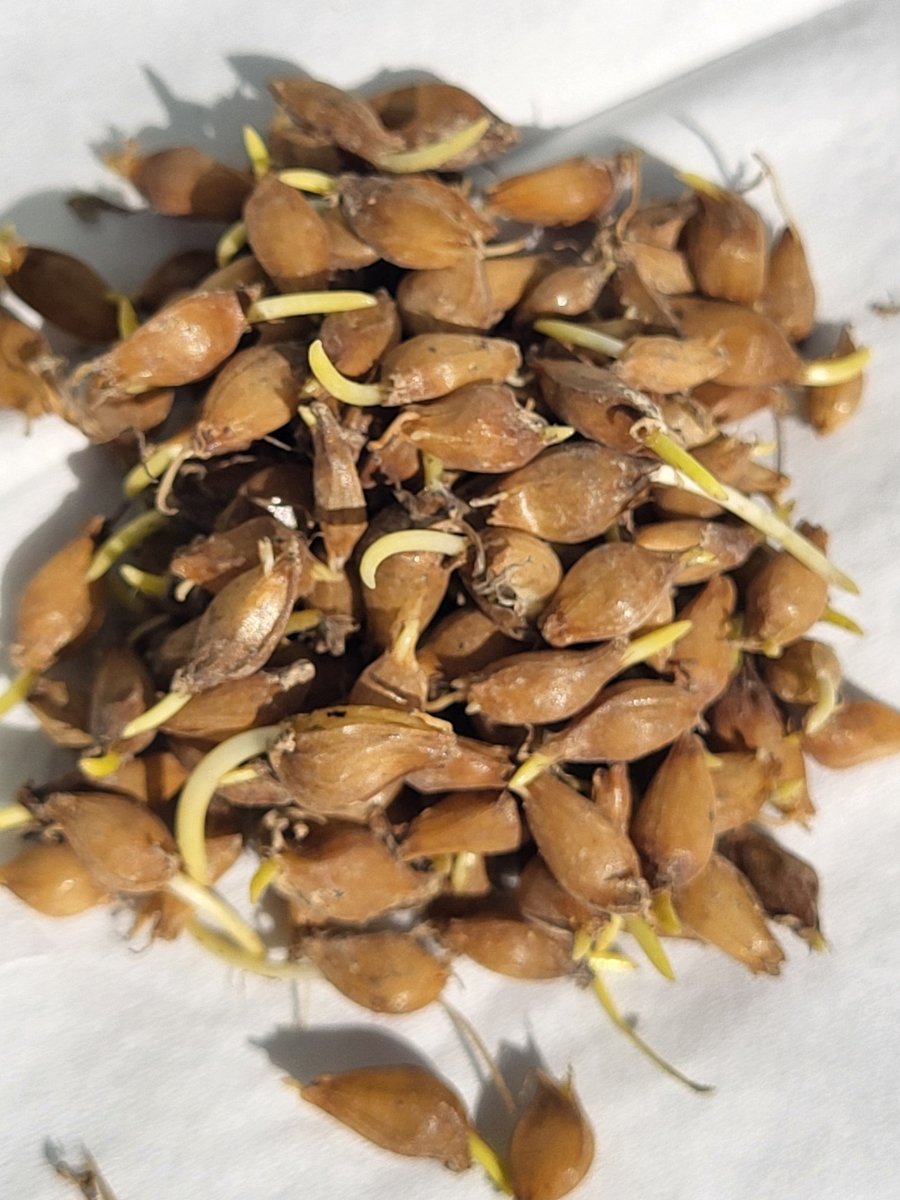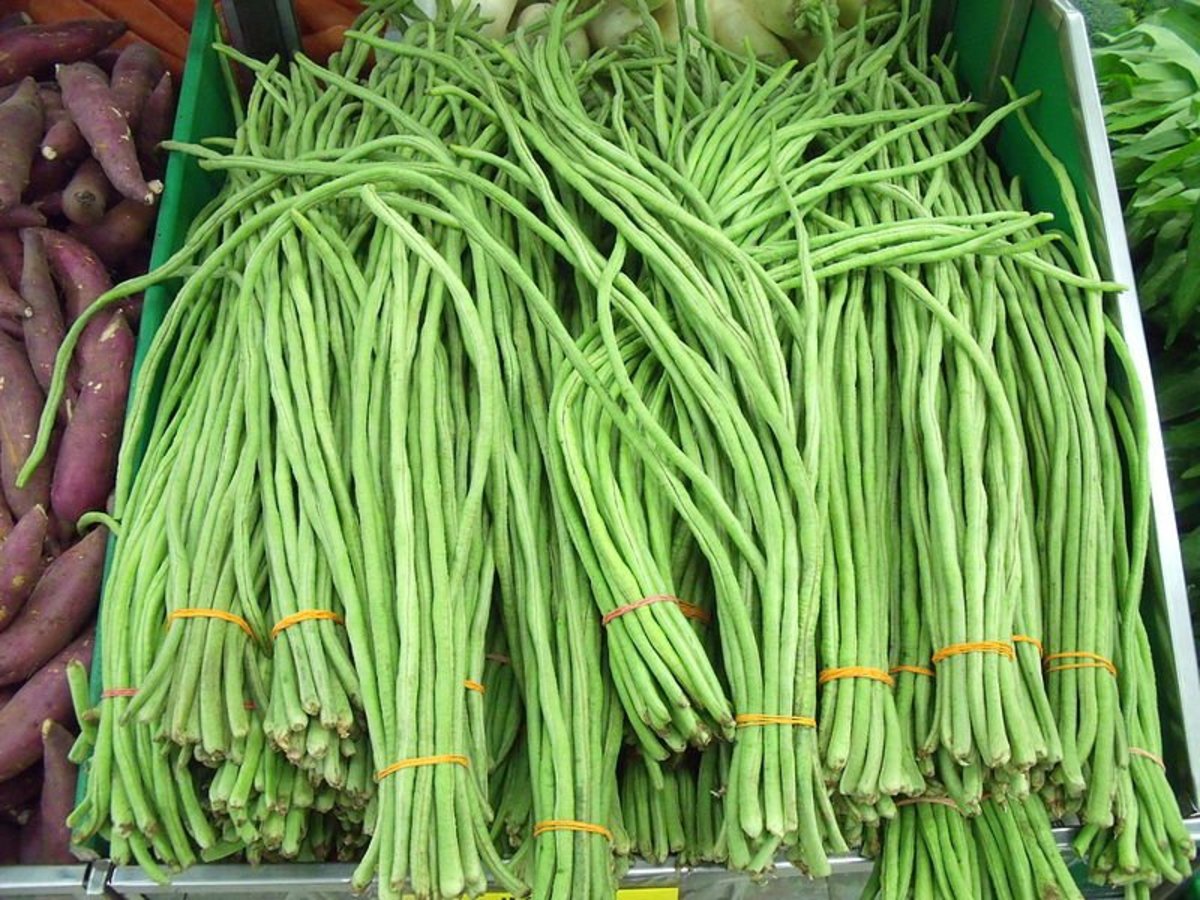My First Vegetable Garden
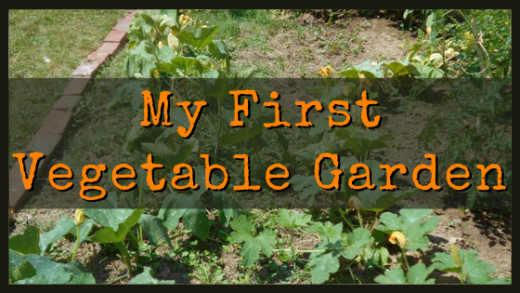
Landscaping
Part of the fun of moving from an apartment to a house was having a yard to tend to. Each spring, it's time to cut the grass, trim the hedges, and plant flowers. My second spring at my house, however, I decided to start a vegetable garden as well. Here are the results of my first vegetable garden.
Starting Seeds Indoors in Egg Cartons
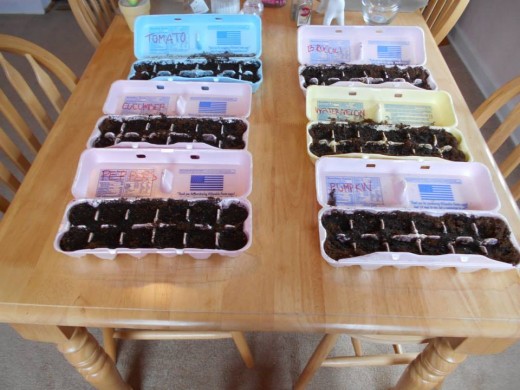
Preparation
As the ground began to thaw, I started to prepare for my vegetable garden. I wanted to try planting from seeds. So, I went to Walmart and bought a packet of six different kinds of seeds: pumpkin, watermelon, cherry tomato, green pepper, cucumber, and broccoli.
An employee overheard my sister and I talking about my plans to grow the seeds indoors first. We have a short growing season up here in the northeastern part of the country, and I was hoping to get a head start. The employee warned me not to start growing the seeds until at least early April (planting season is May-June up here).
That was a bit discouraging as I thought that I could start in February or March, but I took his advice, and I’m glad that I did. The seeds grew faster than I anticipated.
Indoor Seed Starting Pictures
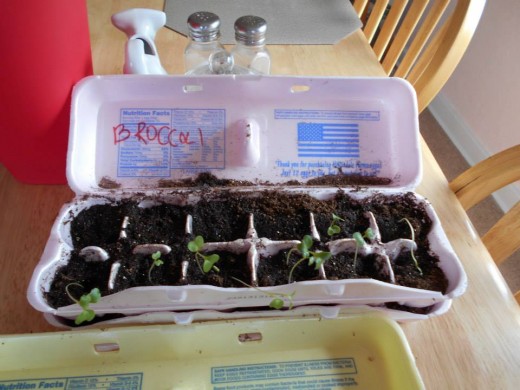
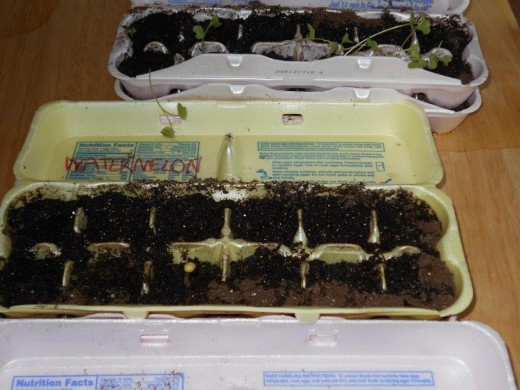
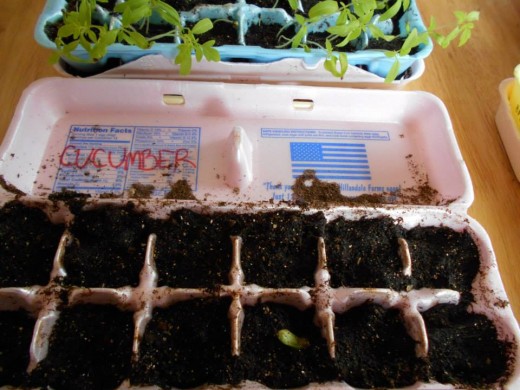
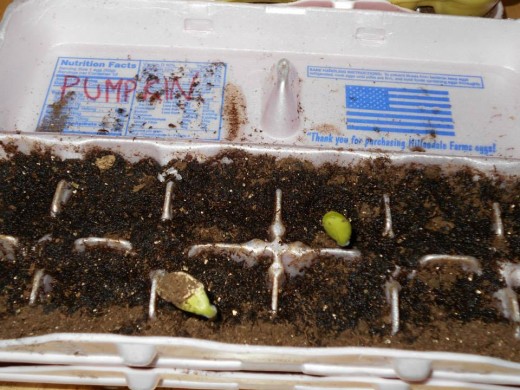
April and May
The first week of April, I planted my seeds. Using egg cartons that I had collected over the winter, I filled each one with dirt and planted each packet full of seeds into one carton, using my dining room table as my green house.
I even took down my curtains in that room to ensure that they received as much light as possible while they grew inside. It was a long, cold winter, one of the longest and coldest that I have ever lived through. So, April was still quite cold.
It wasn’t until May that I could start prepping my garden outside. Until then, I was watering my seeds from a watering can every day, keeping the soil moist and possibly even a little overwatered, but it began to pay off. Within a week, little bits of green began to pop up through the dirt.
It wasn’t long before my buds began to outgrow their egg carton homes. So, I poked a hole in the bottoms of each carton, added dirt to six new cartons, and layered them over each other to allow more room for the roots to grow.
I highly suggest buying deep trays or doubling your egg cartons if you are going to start your seeds indoors. Also, try to choose a location in your house that is out of the way, gets plenty of light, but isn't in an area where you are going to forget about it. That's why I chose my dining room table, even though half of the table was unusable during this stage.
Vegetable Sprouts Just Before Outdoor Planting
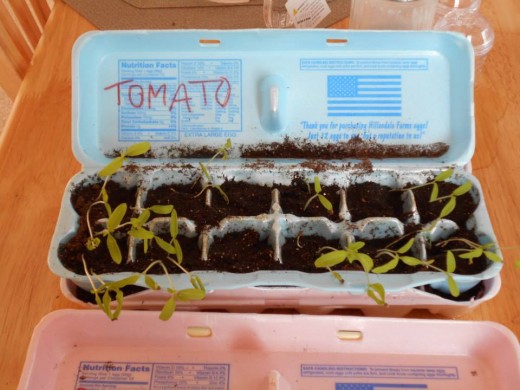
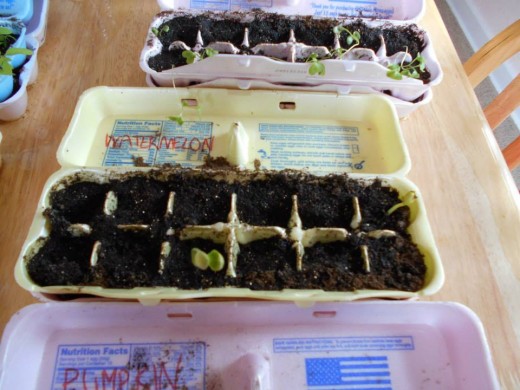
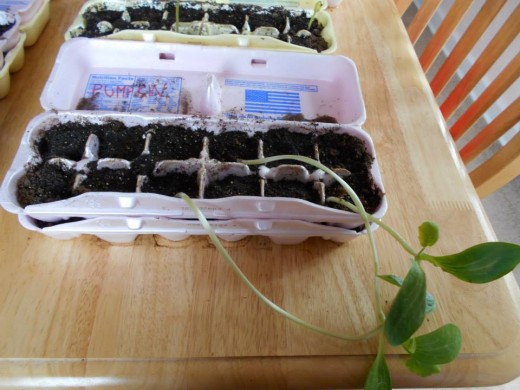
June
After five weeks, it appeared to be safe to plant outdoors. I spent several days creating a bed for my seedlings, trying to choose a location that got a lot of sun but was somewhat secluded. I planted on the side of my house just inside my backyard fence, hoping that it would keep out some of the animals but still allow enough light to help my plants grow (it turns out that deer can jump a four foot fence with little difficulty, even the young ones).
I created a border from old bricks that had been laying in my backyard ever since I moved in. These made a nice, neat border. Once the flower bed was ready, I transplanted my seeds from the egg cartons to the ground. I used colorful plastic ties to keep track of where I had planted my seeds. Not only did this help decide where to water, but I also was able to figure out what was a weed and what was an emerging plant.
Some plants grew extraordinarily fast. I mixed banana peels in with my soil and dumped buckets of water mixed with plant food at least once a week. I think this contributed to their rapid growth. They were also getting several hours of sun each day in the location I had picked, and it was a rainy summer. My vegetables were doing well.
June Pictures
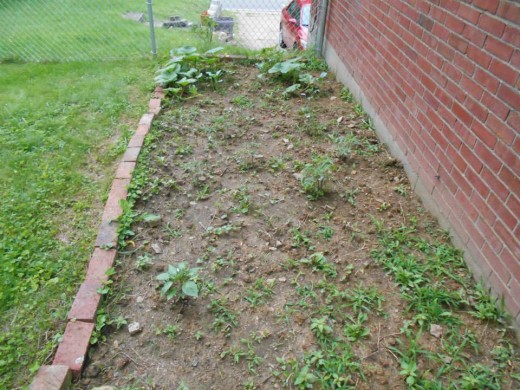
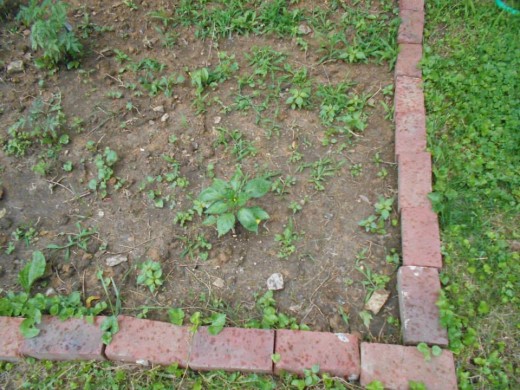
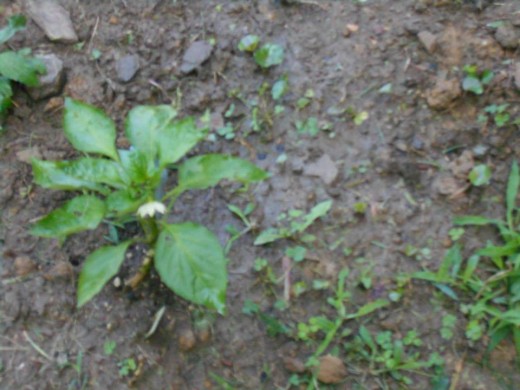
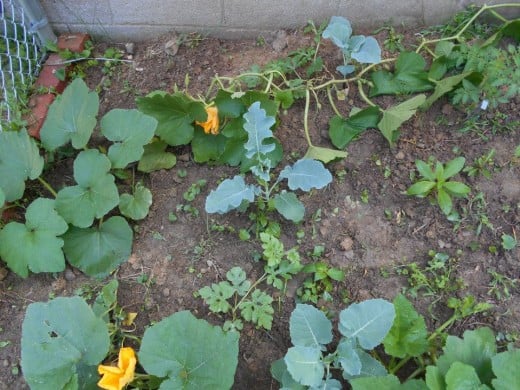
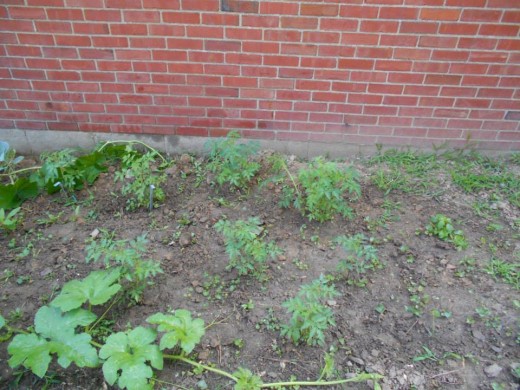
July
By the fourth of July, I had the beginnings of watermelon and peppers growing. My cucumbers never did sprout up, and if they did, I mistook them for weeds and pulled them out. My green peppers did not do well either. I ended up buying a green pepper plant from Walmart when I found no signs of the green pepper plant anywhere.
Weeds were a particularly difficult challenge. It was a large area to cover, and I was very nervous about pulling out the plants by mistake. So, many of the weeds and grass were allowed to stay, as long as they did not wrap themselves around the plants. I have since purchased new tools that help me manage the weeds in my garden.
My tomato plants needed to be staked by then as well. I used metal stakes leftover from an old swing that my parents had taken down and discarded. I tied them off with pieces of rope, but as you’ll see in later pictures, they soon outgrew them.
By the second week of July, my pumpkin vines had outgrown their space. I had to expand my garden to give them more room to grow. So, I extended the border and tore up more of my yard, almost doubling the size of the bed. This gave the pumpkins more room to grow. At one point, they were wrapping themselves around my tomato plants, even climbing the metal poles reserved specifically for the tomatoes.
I also had a full, green pepper by then. It was a little bitter to the taste, but I was still proud of it and made a mental note to let future peppers ripen a little more before eating them.
July Pictures
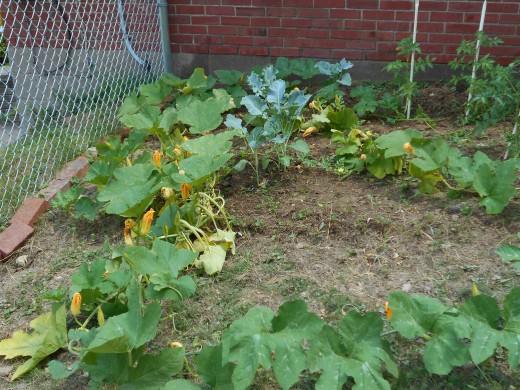
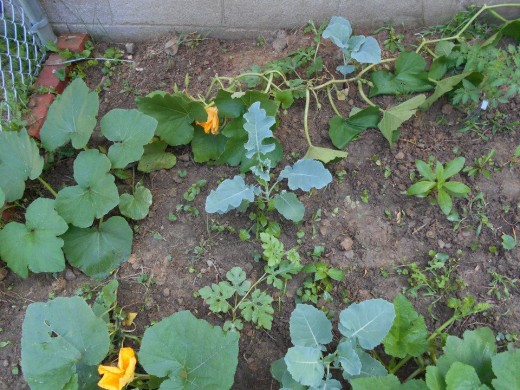
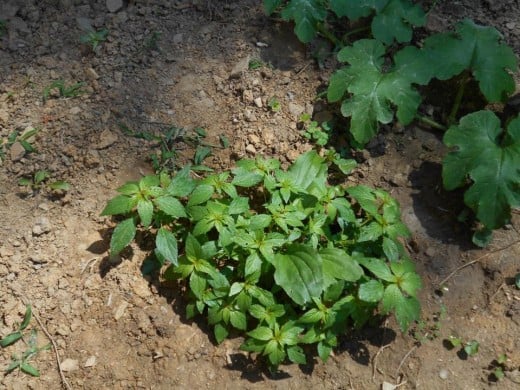
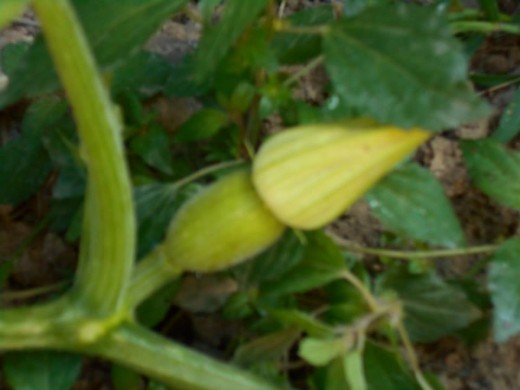
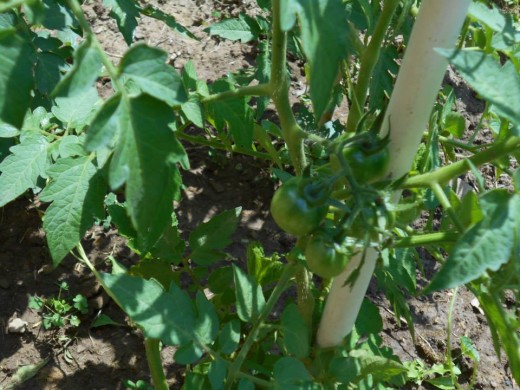
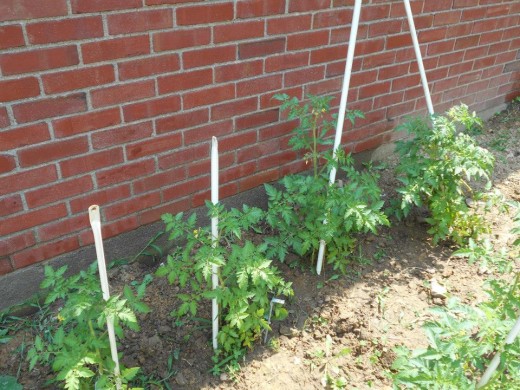
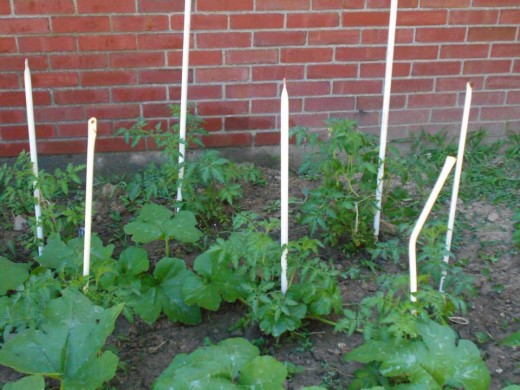
August
The sun was already beginning to shift by August, and my yard was becoming shadier in the back. There was still a good amount of sun hitting the plants each day, though. The tomato vines outgrew their stakes, and dozens of tiny, cherry tomatoes began to grow and ripen. I began to pick them by the second week of August and allow them to ripen in my kitchen. They ripened slowly but surely. I now only pick them if they are turning orange, or if they fall off of the vine while I'm weeding.
By the end of August, I also had some broccoli growing. They grew in small stalks, but they were greener than any head of broccoli you would ever buy in a store. Their downfall, though, was in the pest department. All of my plants had holes in my leaves so I didn’t expect much success from my broccoli. Something liked them way too much. I bought deer and rabbit spray and sprayed the ground around the plants (without spraying on them) once every few weeks to keep them away from my garden, but something was still chewing on the broccoli. However, the heads began to pop up in August, and I had a few nice stalks by the time I returned home from a trip to the beach.
After boiling my first heads of broccoli for dinner, I found out what kind of creature had been helping itself to my broccoli. Clinging to the stalks were little, green caterpillars. The boiling water had killed them and turned them yellow, but they were still on there. It’s a queasy feeling to pick the bugs from your food before you eat them and really diminished the fun of eating my own homegrown broccoli. Every stalk I had picked of my broccoli was full of bug. My largest stalk was filled with at least 12 green caterpillars, and I can only hope that I got them all before digging in to my side dish.
August Photos
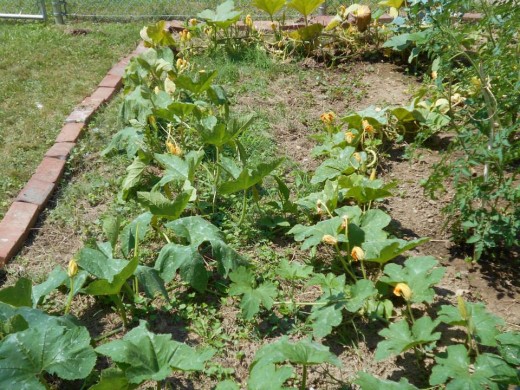
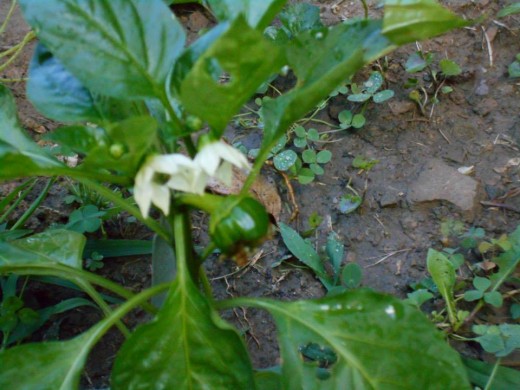
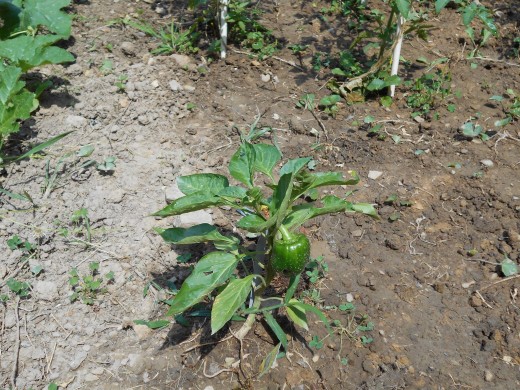
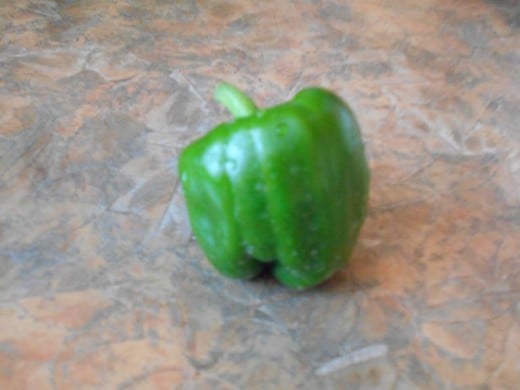
August Pictures
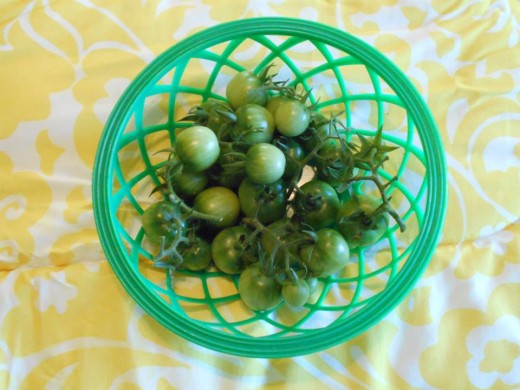
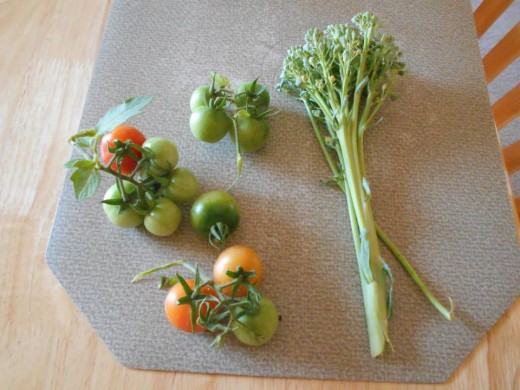
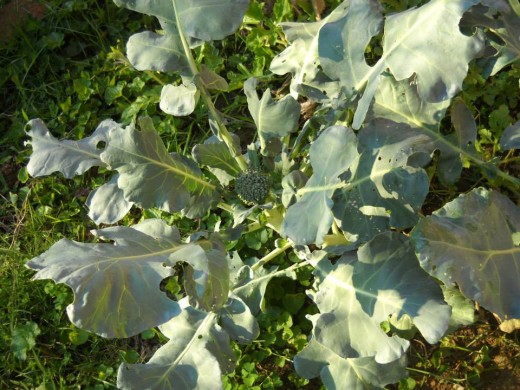
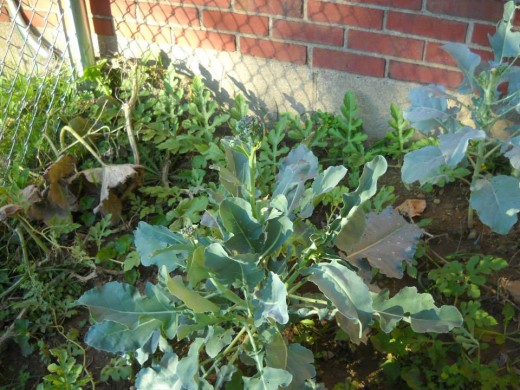
September
In September, the sun shifted even more, and my vegetable garden was getting less and less sunlight each day. This did not slow the growth of my tomato or pepper plants. I got two more peppers out of my one store bought plant, and my tomatoes were still growing by the dozen.
One plant that was no longer doing well, though, were my pumpkin vines. My most successful pumpkin year was when I planted them around my front wall where they got full sun. Seeing that they were no longer growing in the backyard, I moved all of the vines through the fence and pointed them in the direction of the front yard to get them the sunlight they required.
This appeared to work at first. New flowers bloomed, and tiny pumpkins began to grow. However, some little critter decided that it needed to snack on the flowers, and within a week, any hope of a pumpkin for Halloween had diminished.
I have since moved them up to their own garden in my front yard surrounded by deer-proof fencing and receiving optimal sunlight and room to grow. I ended up with three small but healthy pumpkins that first year.
The watermelon vines had not done well all year. They grew long and bloomed with tiny, yellow flowers, but nothing ever materialized into a watermelon any larger than a pea. I haven't grown watermelons since, though I suspect they might do well in the front yard where I planted my pumpkins.
Pumpkin Vines
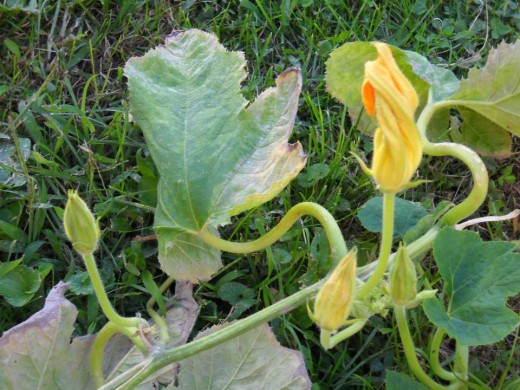
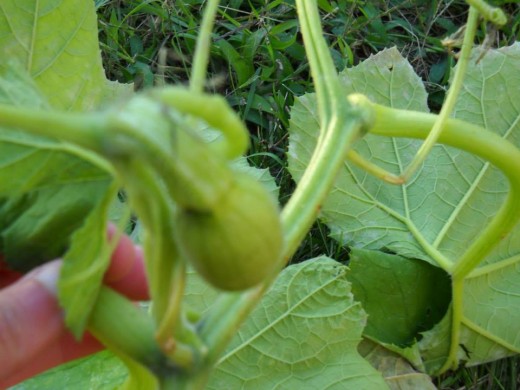
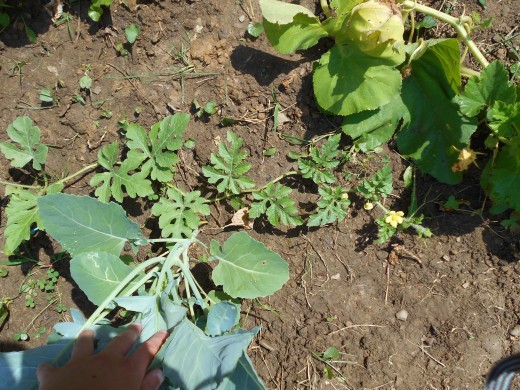
Reflections
Overall, my first vegetable garden was a success. I grew at least 100 cherry tomatoes that year along with three green peppers, and several stalks of broccoli, despite my having to share it with a litter of caterpillars.
I have learned a lot since that first year, including how to keep hungry animals away, how to fertilize the soil, how to use mulch to keep the weeds at bay, and to only grow vegetables on vines out in full sun with a lot of space. I now know how much room I need to allocate for each plant and have a better understanding of how the sunlight shifts in my yard to ensure that all of my plants get as much sun as possible. The plant food and banana peels seemed to help the growth of the plants along with old tea bags and calcium-rich water leftover from making hard boiled eggs.
Ultimately, starting seeds indoors is not really necessary when you can just buy decent-sized plants from the store once the threat of frost is over. I don’t feel like I got crops any faster than I would have with a full-grown plant, which was my intent in starting the seeds inside.
When starting a vegetable garden, I don’t think it’s as important to know the tricks of gardening rather than understanding how the climate works in your area. You need to know the best time to start planting, the way the sun shifts throughout the season, how much rain your area typically receives, and what kinds of crops grow best in your climate. Everything else you'll learn as you go.
Do you have a vegetable garden? If so, share your gardening stories in the comments below!
My Garden in 2014
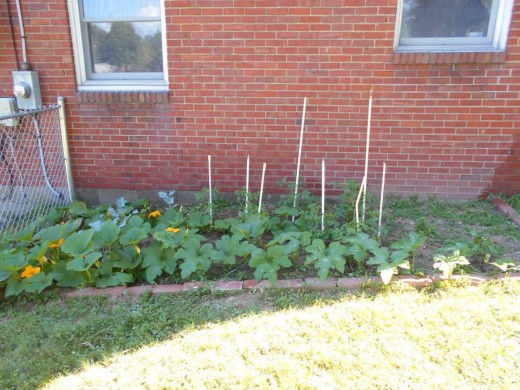
My Pumpkin Patch in 2018
